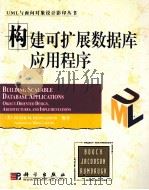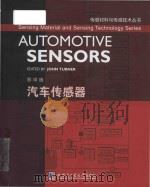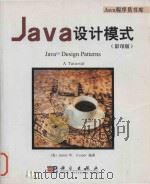《EFFECTIVE JAVA 影印版》
| 作者 | (美)Joshua Bloch著 编者 |
|---|---|
| 出版 | 未查询到或未知 |
| 参考页数 | |
| 出版时间 | 没有确切时间的资料 目录预览 |
| ISBN号 | 无 — 求助条款 |
| PDF编号 | 820110248(仅供预览,未存储实际文件) |
| 求助格式 | 扫描PDF(若分多册发行,每次仅能受理1册) |
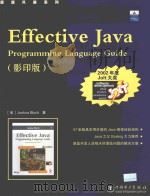
1 Introduction1
2 Creating and Destroying Objects5
Item 1: Consider providing static factory methods instead of constructors5
Item 2: Enforce the singleton property with a private constructor10
Item 3: Enforce noninstantiability with a private constructor12
Item 4: Avoid creating duplicate objects13
Item 5: Eliminate obsolete object references17
Item 6: Avoid finalizers20
3 Methods Common to All Objects25
Item 7: Obey the general contract when overriding equals25
Item 8: Always override hashCode when you override equals36
Item 9: Always override to String42
Item 10: Override clone judiciously45
Item 11: Consider implementing Comparable53
4 Classes and Interfaces59
Item 12: Minimize the accessibility of classes and members59
Item 13: Favor immutability63
Item 14: Favor composition over inheritance71
Item 15: Design and document for inheritance or else prohibit it78
Item 16: Prefer interfaces to abstract classes84
Item 17: Use interfaces only to define types89
Item 18: Favor static member classes over nonstatic91
5 Substitutes for C Constructs97
Item 19: Replace structures with classes97
Item 20: Replace unions with class hierarchies100
Item 21: Replace enum constructs with classes104
Item 22: Replace function pointers with classes and interfaces115
6 Methods119
Item 23: Check parameters for validity119
Item 24: Make defensive copies when needed122
Item 25: Design method signatures carefully126
Item 26: Use overloading judiciously128
Item 27: Return zero-length arrays, not nulls134
Item 28: Write doc comments for all exposed API elements136
7General Programming141
Item 29: Minimize the scope of local variables141
Item 30: Know and use the libraries145
Item 31: Avoid float and double if exact answers are required149
Item 32: Avoid strings where other types are more appropriate152
Item 33: Beware the performance of string concatenation155
Item 34: Refer to objects by their interfaces156
Item 35: Prefer interfaces to reflection158
Item 36: Use native methods judiciously161
Item 37: Optimize judiciously162
Item 38: Adhere to generally accepted naming conventions165
8 Exceptions169
Item 39: Use exceptions only for exceptional conditions169
Item 40: Use checked exceptions for recoverable conditions and run-time exceptions for programming errors172
Item 41: Avoid unnecessary use of checked exceptions174
Item 42: Favor the use of standard exceptions176
Item 43: Throw exceptions appropriate to the abstraction178
Item 44: Document all exceptions thrown by each method181
Item 45: Include failure-capture information in detail messages183
Item 46: Strive for failure atomicity185
Item 47: Don't ignore exceptions187
9 Threads189
Item 48: Synchronize access to shared mutable data189
Item 49: Avoid excessive synchronization196
Item 50: Never invoke wait outside a loop201
Item 51: Don't depend on the thread scheduler204
Item 52: Document thread safety208
Item 53: Avoid thread groups211
10 Serialization213
Item 54: Implement Seriali zable judiciously213
Item 55: Consider using a custom serialized form218
Item 56: Write readobj ect methods defensively224
Item 57: Provide a readResol ve method when necessary230
References233
Index of Patterns and Idioms239
Index241
《EFFECTIVE JAVA 影印版》由于是年代较久的资料都绝版了,几乎不可能购买到实物。如果大家为了学习确实需要,可向博主求助其电子版PDF文件。对合法合规的求助,我会当即受理并将下载地址发送给你。
高度相关资料
-

- 梁启超文选 影印版
- 1935
-

- 遗传学 影印版
- 1999
-

- 破戒.影印版
- 1954.12 新潮社
-
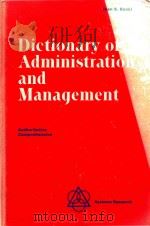
- Dictionary of administration and management authoritative comprehensive
- 1981 Systems Research
-
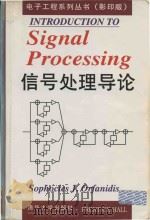
- Introduction to signal processing (影印版)
- 1999 Tsinghua University Press
-

- Instant notes in ecology 生态学(影印版)
- 1998 Bios Scientific Publishers Limited
-
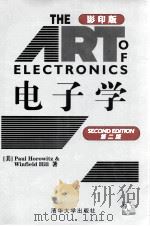
- 电子学 第2版 影印版
- 1989 清华大学出版社,Cambridge University Press
-

- 生态学 第3版·影印版
- 1999 科学出版社
-
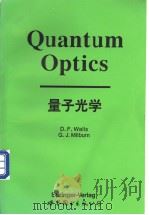
- 量子光学 英文影印版
- 1998 世界图书出版公司北京公司
提示:百度云已更名为百度网盘(百度盘),天翼云盘、微盘下载地址……暂未提供。➥ PDF文字可复制化或转WORD
